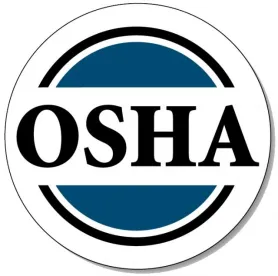The Occupational Safety and Health Administration has published a hazard alert explaining employer obligations and outlining preventive steps for avoiding hazards when workers use scissor lifts.
Scissor lifts are work platforms used to safely move workers straight up and down and to different locations in the construction, retail, entertainment, manufacturing, and other industries. They are unique in that the lifting mechanism moves the work platform using crossed beams functioning in a scissor-like fashion. According to the alert, OSHA investigations have determined that the failure to address fall protection, stabilization, and positioning can hurt workers using scissor lifts.
OSHA construction standards require guardrails on scissor lifts to prevent workers from falling (29 CFR §1926.451(g) and 29 CFR 1910.29(a)(3)(vii)). Besides checking to assure guardrails are in place, the agency advises that workers stand on the work platform, never on the guardrails, and that the work be kept within easy reach so employees do not need to lean away from the scissor lift.
To assure proper stabilization, employers should ensure scissor lifts will not tip over or collapse. Safe work procedures include not moving the lift while it is elevated, isolating the unit or implementing traffic control measures to ensure other equipment cannot contact the scissor lift, and picking work locations with firm, level surfaces away from hazards that can cause instability, such as drop-offs, holes, slopes, bumps, ground obstructions, or debris. Scissor lifts rated for outdoor use should be used only when weather conditions are good, including wind speeds below 28 miles per hour.
To prevent scissor lifts from collapsing, safety systems designed to stop collapsing must be maintained and not bypassed, weight on the work platform must not exceed the manufacturer’s load rating, equipment other than the scissor mechanism should never be used to raise the work platform, and steps should be taken to assure other moving equipment does not strike the lift. Correct positioning involves placing the lift to prevent crushing or electrocution hazards.
Besides traffic controls, safe practices include using ground guides during movement, and selecting work locations that ensure scissor lifts are more than 10 feet from electrical power sources or other overhead hazards. OSHA reminded employers than employees working around electrical equipment must be qualified and have received required electrical training (per §1910.269, §1910.333, and §1926 Subpart V).
In addition, the manufacturer’s maintenance and inspection instructions must be followed to assure the lifts are maintained properly, and employees must be trained (§1926.454) on related safety topics, including on following manufacturer instructions for operating the scissor lift vertically and while in transit, on handling materials on the lift, including weight limits, on being alert for other worksite hazards employees may encounter when working on a scissor lift, and on reporting any equipment defects or maintenance needs.
Other pertinent OSHA general industry standards include §1910.23 and §1910.28 -.29. OSHA’s scaffolds or staging construction standard at §1915.71 applies to shipyards, while §1926.21 and §1926.452, apply to the construction industry. OSHA’s scaffolding standard also may be consulted, along with American National Standards Institute standards for manufacturing, owning, and operating scissor lifts (ANSI A92.3-2006 and A92.6-2006).




 />i
/>i

